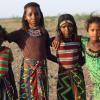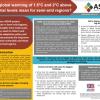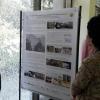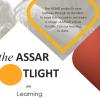Jump to: ASSAR's focus in Tamil Nadu | Key insights | Country partners & contact details | News stories | Outputs

India consists of a diverse set of ecosystems with a range of risks, climatic and non-climatic exposures, differential vulnerability profiles, and various institutional regimes. The country is complex, with multi-hazard environments and climate change hotspots. Negative impacts on key rural production systems like agriculture and forestry are already evident, and a range of losses and impacts across agricultural, water and forest-based systems are projected for the future. Major livelihood transitions are expected to take place along the rural-urban continuum, coupled with increasing urbanisation. A significant proportion of the population lives in extreme poverty and is highly vulnerable to both everyday risks and the impacts of extreme events. The country also faces serious institutional and governance challenges, compounded by contested growth dynamics, rural-urban migration, and fluxes in the historically-established formal and informal sectors. These dynamics will combine to create pockets of risk where concentrations of historical and emergent challenges are amplified by climatic variability.
India’s Moyar-Bhavani sub-region comprises a diverse landscape with abundant natural resources, complex systems of governance, and a multitude of actors with varying degrees of influence and levels of interaction within the system. Along with diverse wildlife and physiographic features, the landscape has very high human density, and a long history of human use. The area is inhabited by diverse indigenous tribal communities, as well as a large population of scheduled castes (socially-marginalised groups). Major livelihood activities include agriculture, fisheries, pastoralism, and collection of non-timber forest products. The forest-agricultural socio-ecological system is a key aspect here.
There are existing stressors within the agricultural system including groundwater dependency, decreasing labour, low productivity, and low levels of mechanisation. Risks caused by the occurrence of droughts, increasing temperature profile, declining crop yields and livestock mortality are some of the sub-region’s key challenges. With ongoing deforestation, the proliferation of invasive alien species, landscape fragmentation, and local extinction impacts, natural ecosystems suffer from rapid land use changes. Considering the essential role that native ecosystems play in ensuring tribal livelihoods, climate change is projected to intensify existing vulnerabilities and amplify risks.
Key insights
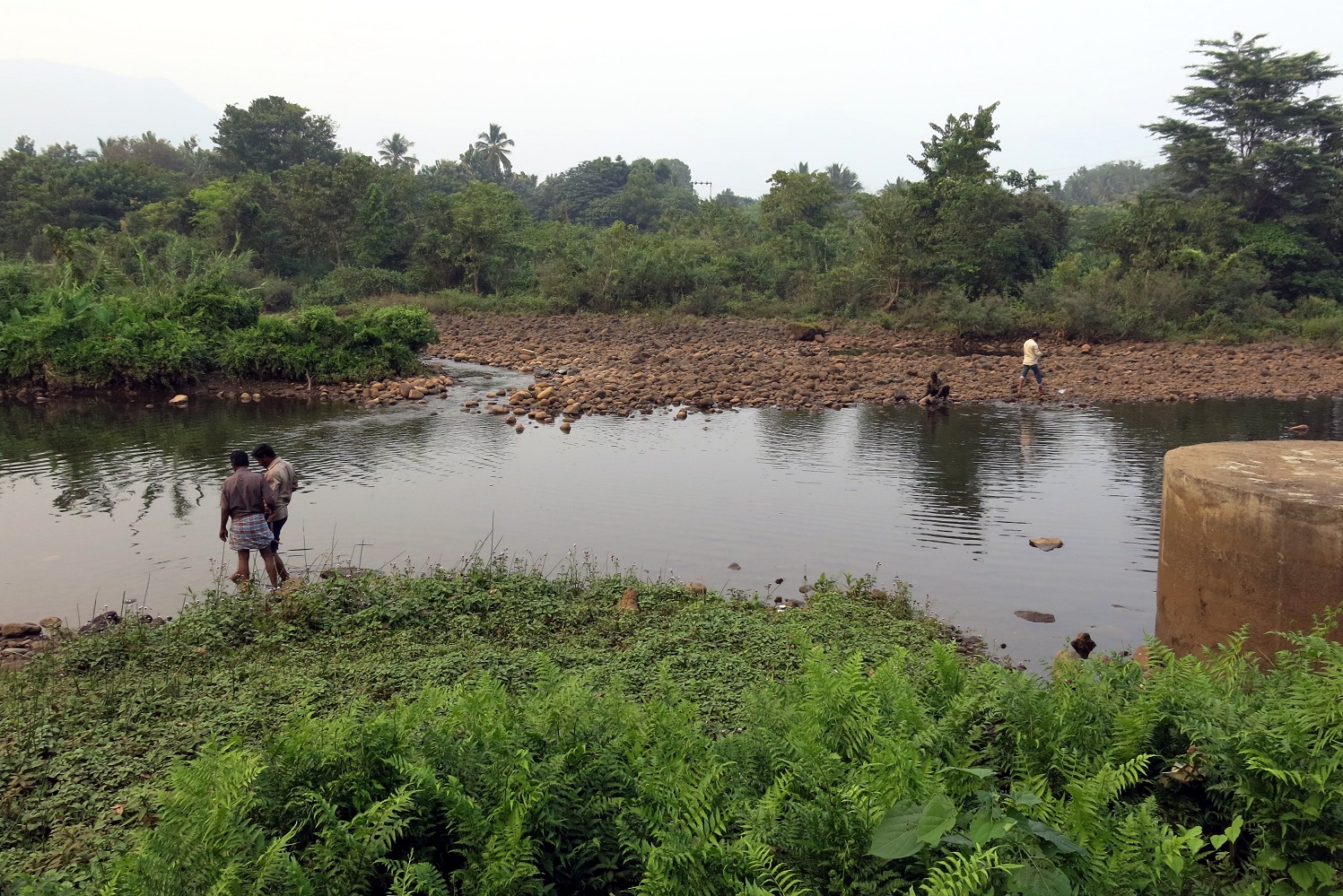
Climate change and climate variability have resulted in increased temperatures and unpredictable monsoons. Despite observed declines in rainfall and recurrent drought, some agricultural areas are greening due to a growing dependence on groundwater, and unauthorised lift irrigation from perennial rivers.

An increase in agricultural water use, driven by government policy (e.g., free electricity), has enabled a shift from dryland agriculture to intensively-irrigated agriculture that may not be sustainable under future climates.
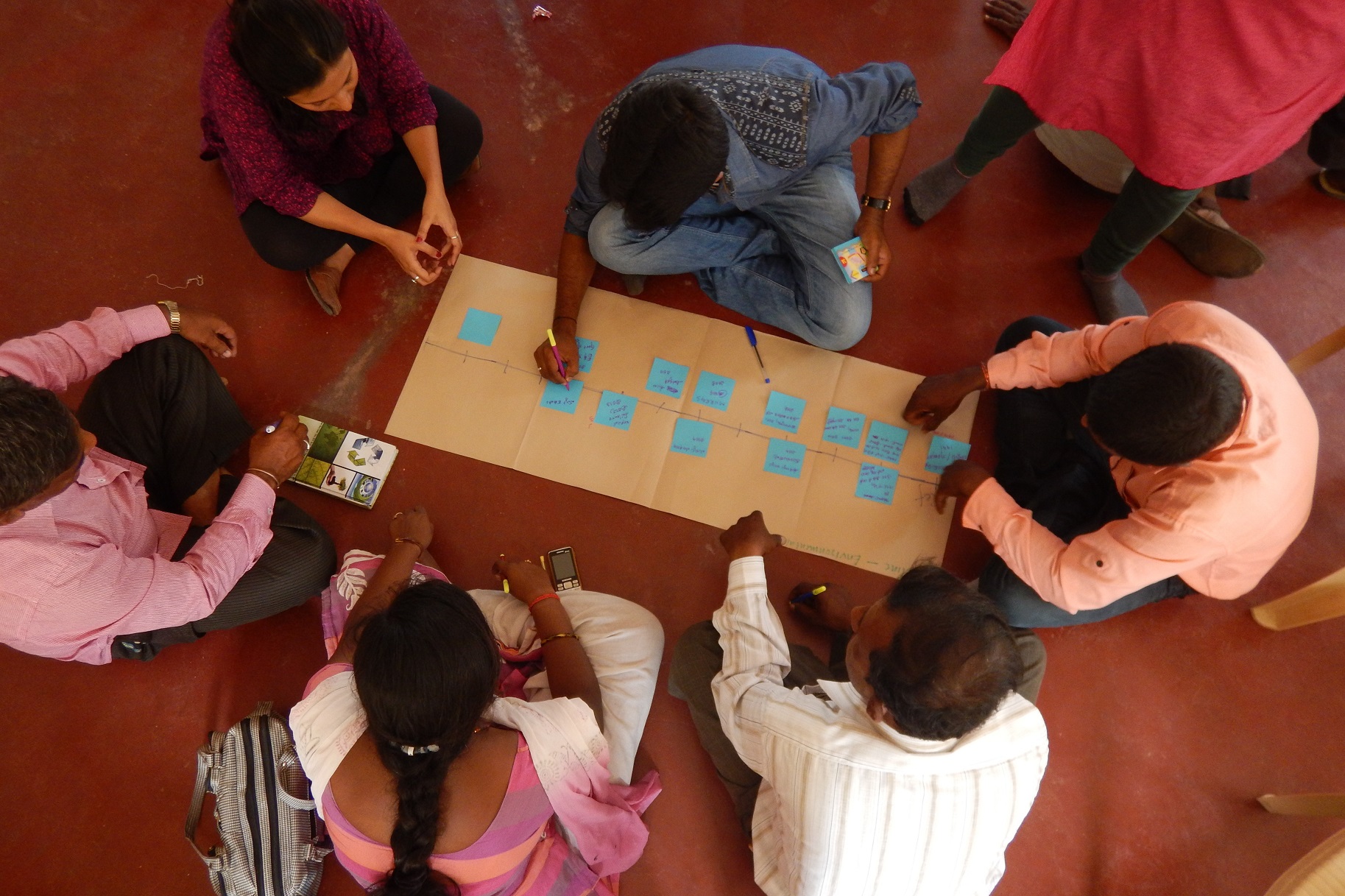
The agrarian transition driven by changing aspirations has increased household incomes, especially of large and medium farmers. However, this increase has had little impact on women's capacity as they often cannot access these incomes for their own investments. The increased movement of men into non-agricultural livelihoods has opened up space for women in agriculture, but they remain constrained by a lack of asset ownership and consequent inabilities to increase land productivity.
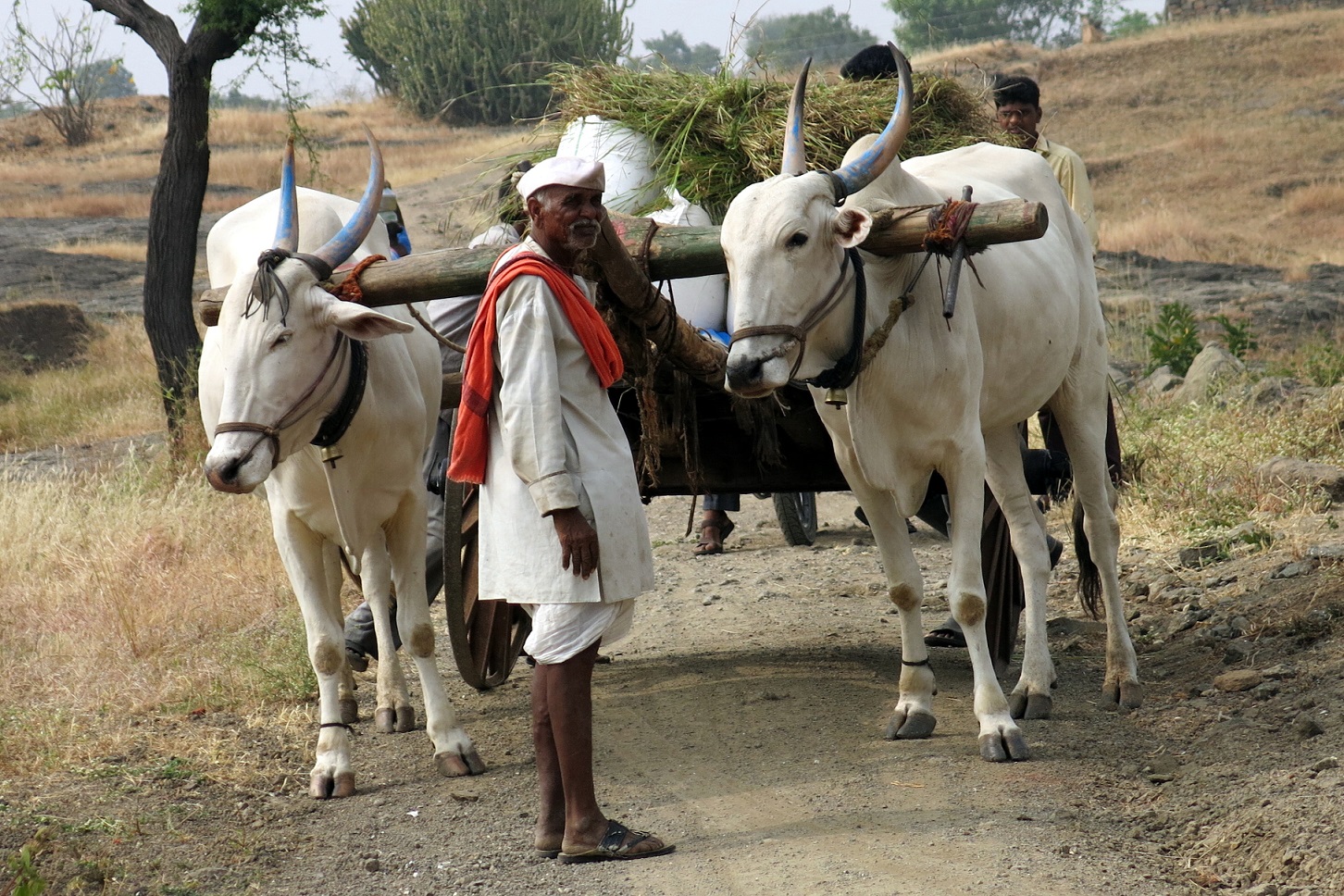
Although food security has improved in the region through the targeted Public Distribution System, undernourishment persists and may worsen with increasing urbanisation, shifts to high-value commercial farming (despite the risks), and water scarcity.

Invasive alien species are adversely impacting native biodiversity and communities. Yet a lack of tenure, and the extensive network of protected areas in the region, complicate the use of these species by forest-dependent communities to supplement agricultural incomes.

Poor access to services, and lack of knowledge and support constrain women, while men continue to maintain hegemony over technology-related, and indeed, more remunerative tasks. Education, however, remains one of the biggest assets to women, which allows them to diversify their livelihoods out of agriculture.
Click here for more detail, and ASSAR's specific recommendations for policy, practice, and research
Country partners and contact details
| Jagdish Krishnaswamy (jagdish@atree.org), Ashoka Trust for Ecology and the Environment | |
| Daniel Morchain (danielmorchain@gmail.com), Oxfam GB | |
| Colleen Magner (magner@reospartners.com), Reos Partners |
Click here to view the regional team members
Related news stories
Related outputs
|
Type |
Author(s) |
Year |
Title |
Details |
Links |
|---|---|---|---|---|---|
| Book chapter | Bendapudi, R., Kumbhar, N., Gaikwad, P. and Lobo, C. | 2019 | Agro-met services and farmer responsiveness to advisories: Implications for climate-smart agriculture. | In: W. L. Filho (ed.) Handbook of climate change resilience. Cham: Springer. | Poster |
| Book chapter | D’Souza, M., Rao, B. and Awashi, S. | 2016 | Community-driven vulnerability assessment and resilience building: Cases from development contexts. | Managing the increasing heat stress in rural areas. | In: W. L. Filho (ed.) Handbook of Climate Change Resilience. Cham: Springer. |
| Book chapter | Sami, N. | 2017 | Multi-level climate change planning: Scale, capacity and the ability for local action. | In: S. Moloney, H. Fuenfgeld and M. Granberg (eds.) Local Action on Climate Change. London, UK: Routledge, pp. 92-110. | |
| Book chapter | Sami, N. | 2018 | Localising environmental governance in India: Mapping urban institutional structures. | In A. Luque-Ayala, H. A. Bulkeley and S. Marvin (eds.) Rethinking Urban Transitions: Politics in the Low Carbon City. London, UK: Routledge (chapter). | |
| Book chapter | Shaibu, M. T., Alhassan, S. I., Avornyo, F. K., Lawson, E. T., Mensah, A. and Gordon, C. | 2019 | Perceptions and determinants of the adoption of indigenous strategies for adaptation to climate change: Evidence from smallholder livestock farmers in north-west Ghana. | In: J. K. Kuwornu (ed.) Climate Change and Sub-Saharan Africa: The vulnerability and adaptation of food supply chain factors. Vernon Press, pp. 229-249. | |
| Book chapter | Singh, C . | _ | Of borewells and bicycles: The gendered nature of water access in Kolar, Karnataka and its implications on local adaptive capacity. | In: A. Hans, N. Rao, A. Prakash and A. Patel (eds.) En-gendering Climate Change: Learnings from South Asia. New Delhi, India: Routledge. | |
| Brochure/flyer | ASSAR | 2016 | ASSAR adaptation puzzle. [Puzzle] | Brochure | |
| Brochure/flyer | Basu, R. and Morchain, D. | 2017 | On a road trip to find common ground: Can the goals of the private sector be compatible with sustainable development? [Comic] | ||
| Brochure/flyer | D’Souza, M. and Misquitta, K. | 2018 | From me to we...from mine to ours! A story of how motivation changes people’s perceptions and drives community action. [Story of Change] | ||
| Infographic | ASSAR | 2018 | Challenging assumptions about gender and climate adaptation. | Oshiwambo infographic | |
| Infographic | ASSAR | 2018 | Dreaming of a better life: Let’s recognise and value people’s changing aspirations. | ||
| Infographic | ASSAR | 2018 | Gender is one of many factors that influence how we are impacted by and respond to climate change. | Oshiwambo infographic | |
| Infographic | ASSAR | 2018 | Household relationships help determine whether and how we can – or can’t – respond to pressures. | ||
| Infographic | ASSAR | 2018 | In semi-arid regions, women are not necessarily victims or powerless: They are often diversifying their livelihoods and increasing their agency. | ||
| Infographic | ASSAR | 2018 | Multiscale governance: The paradox of top-down policy design. | French infographic | |
| Infographic | ASSAR | 2018 | Sometimes our interventions can lead to unintended consequences: A well does not always lead to wellbeing. | ||
| Information brief | Adiku, P. and Khan, A. | 2018 | Migration in climate change hotspots: Opportunities and challenges for adaptation. | Collaborative Adaptation Research Initiative in Africa and Asia (CARIAA). | |
| Information brief | ASSAR | 2015 | Planning for climate change in the semi-arid regions of India. | ||
| Information brief | ASSAR | 2015 | South Asia regional diagnostic study: Report summary. | ||
| Information brief | ASSAR | 2016 | How can we better understand and manage the impacts of droughts? | ||
| Information brief | ASSAR | 2016 | Key findings from ASSAR’s regional diagnostic study & initial research: Moyar Bhavani sub-region, Tamil Nadu. | ||
| Information brief | ASSAR | 2016 | What is Transformative Scenario Planning? | ||
| Information brief | ASSAR | 2018 | Do conservancies enhance the adaptive capacity of communities? Perspectives from ASSAR’s work in Kenya. | ||
| Information brief | ASSAR | 2018 | The gendered challenges of food security: Stories and lessons from ASSAR. | ||
| Information brief | ASSAR | 2018 | What will global warming of 1.5°C and 2°C above pre-industrial levels mean for semi-arid regions? | ||
| Information brief | ASSAR | 2018 | Women, work and adaptive capacity. | ||
| Information brief | ASSAR | 2019 | A focus on wellbeing can link adaptation to outcomes that matter to people. | ||
| Information brief | ASSAR | 2019 | Adaptation is about people. | ||
| Information brief | ASSAR | 2019 | Does villagisation enhance the adaptive capacity of pastoralist communities? Perspectives from ASSAR's work in Ethiopia. | ||
| Information brief | Bosworth, B., Hegga, S. and Ziervogel, G. | 2018 | When participation is not enough: Lessons from decentralised water governance in Namibia. | ||
| Information brief | CARIAA | 2018 | Climate adaptation policy. | ||
| Information brief | CARIAA | 2018 | Understanding migration in India. | ||
| Information brief | CARIAA | 2018 | Understanding vulnerabilities using a hotspot approach. | Collaborative Adaptation Research in Africa and Asia (CARIAA) | |
| Information brief | Few, R. | 2017 | Drought does not work alone. | ||
| Information brief | Few, R., Singh, C., Spear, D., Davies, J., Tebboth, M. G. L., Sidibe, A, Mensah, A. and Thompson-Hall, M. | 2018 | When adaptation barriers and enablers intersect: Key considerations for adaptation planning drawn from ASSAR’s findings. | ||
| Information brief | Lumosi, C. and McGahey, D. | 2016 | Communicating climate change for adaptation: Challenges, successes and future priorities. | ||
| Information brief | Michael, K., Singh, C., Deshpande, T. and Bazaz, A. | 2017 | Dimensions of vulnerability in rural and urban areas: A case of migrants in Karnataka. | ||
| Information brief | Rao, N., Lawson, E. T., Raditloaneng, W. N., Solomon, D. and Angula, M. N. | 2016 | Gendered vulnerabilities to climate change: Insights from the semi-arid regions of Africa and Asia. | GSDR brief | |
| Information brief | Singh, C., Michael, K. and Bazaz, A. | 2017 | Barriers and enablers to climate adaptation: Evidence from rural and urban India. | ||
| Information brief | Tasgaonkar, P., D’Souza, M., Bendapudi, R. and Jacobs, C. | 2018 | Vulnerability to heat stress: A case study of Yavatmal, Maharashtra, India. | ||
| Information brief | Thomas, R. and Duraisamy, V. | 2017 | Vulnerability to groundwater drought in semi-arid areas of western Ahmednagar District, India. | Marathi information brief | |
| Journal article | Cundill, G., Harvey, B., Tebboth, M., Cochrane, L., Currie-Alder, B., Vincent, K., Lawn, J., Nicholls, R. J., Scodanibbio, L., Prakash, A., New, M., Wester, P., Leone, M., Morchain, D., Ludi, E., DeMaria-Kinney, J., Khan, A. and Landry, M. | 2018 | Large-scale transdisciplinary collaboration for adaptation research: Challenges and insights. | Global Challenges, 1700132. | |
| Journal article | Deshpande, T., Michael, K. and Bhaskara, K. | 2018 | Barriers and enablers of local adaptive measures: A case study of Bengaluru’s informal settlement dwellers. | Local Environment, DOI: 10.1080/13549839.2018.1555578. | Information brief |
| Journal article | Duraisamy, V., Bendapudi, R., and Jadhav, A. | 2018 | Identifying hotspots in land use land cover change and the drivers in a semi-arid region of India. | Environmental Monitoring and Assessment, 190: 535. | Summary |
| Journal article | Few, R. and Tebboth, M. G. L. | 2018 | Recognising the dynamics that surround drought impacts. | Journal of Arid Environments, 157: 113-115. | Summary; Information brief |
| Journal article | Few, R., Morchain, D., Spear, D., Mensah, A. and Bendapudi, R. | 2017 | Transformation, adaptation and development: Relating concepts to practice. | Palgrave Communications, 3: 17092. | Summary |
| Journal article | Gajjar, S. P., Singh, C. and Deshpande, T. | 2018 | Tracing back to move ahead: A review of development pathways that constrain adaptation features. | Climate and Development. | Summary |
| Journal article | McGahey, D. J. and Lumosi, C. K. | 2018 | Information brief | ||
| Journal article | Michael, K., Deshpande, T. and Ziervogel, G. | 2018 | Examining vulnerability in a dynamic urban setting: The case of Bangalore’s interstate migrant waste pickers. | Climate and Development. | Summary; Information brief |
| Journal article | Morchain, D., Prati, G., Kelsey, F. and Ravon, L. | 2015 | Summary | ||
| Journal article | Ramarao, M. V. S., Sanjay, J., Krishnan, R., Mujumdar, M., Bazaz, A. and Revi, A. | 2018 | On observed aridity changes over the semiarid regions of India in a warming climate. | Theoretical and Applied Climatology. | Summary |
| Journal article | Rao, N., Lawson, E. T., Raditloaneng, W. N., Solomon, D., and Angula, M. N. | 2017 | Gendered vulnerabilities to climate change: Insights from the semi-arid regions of Africa and Asia. | Climate and Development. | Information brief |
| Journal article | Singh, C. | 2017 | Using life histories to understand temporal vulnerability to climate change in highly dynamic contexts. | SAGE Research Methods Cases. | Summary; Manual |
| Journal article | Singh, C. | 2019 | Migration as a driver of changing household structures: Implications for household livelihoods and adaptation. | Migration and Development. | Summary |
| Journal article | Singh, C., Daron, J., Bazaz, A., Ziervogel, G., Spear, D., Krishnaswamy, J., Zaroug, M. and Kituyi, E. | 2018 | The utility of weather and climate information for adaptation decision-making: Current uses and future prospects in Africa and India. | Climate and Development, 10(5): 389-405. | Summary; Video |
| Journal article | Singh, C., Deshpande, T. and Basu, R. | 2017 | How do we assess vulnerability to climate change in India? A systematic review of literature. | Regional Environmental Change, 17(2): 527-538. | Summary |
| Journal article | Singh, C., Rahman, A., Srinivas, A. and Bazaz, A. | 2018 | Risks and responses in rural India: Implications for local climate change adaptation action. | Climate Risk Management, 21: 52-68. | Summary; Information brief |
| Journal article | Solomon, D. S. and Rao, N. | 2018 | Wells and wellbeing in South India. | Economic & Political Weekly, 53(17). | Infographic; Information brief |
| Journal article | Spear, D. and Chappel, A. | 2018 | Livelihoods on the edge without a safety net: The case of smallholder crop farming in north-central Namibia. | Land, 7(3): 79. | Summary |
| Journal article | Thomas, R. and Duraisamy, V. | 2018 | Hydrogeological delineation of groundwater vulnerability to droughts in semi-arid areas of western Ahmednagar district. | The Egyptian Journal of Remote Sensing and Space Science, 21(2): 121-137. | Summary; English information brief; Marathi information brief |
| Journal article | Totin, E., Butler, J. R., Sidibé, A., Partey, S., Thornton, P. K. and Tabo, R. | 2018 | Can scenario planning catalyse transformational change? Evaluating a climate change policy case study in Mali. | Futures, 96: 44-56. | Summary |
| Journal article | Totin, E., Segnon, A. C., Schut, M., Affognon, H., Zougmoré, R. B., Rosenstock, T., and Thornton, P. K. | 2018 | Institutional perspectives of climate-smart agriculture: A systematic literature review. | Sustainability, 10(6): 1990. | Summary |
| Photo essay | Deshpande, T. and Michael, K. | 2017 | High and dry. | ||
| Publication in progress | Ashwathi. V. K., Badiger, S., Krishnaswamy, J. and Bunyan, M. | _ | Implications of future climate and land use/land cover change on catchment water budgets in Moyar-Bhavani sub-basin. | Poster | |
| Journal article | Conway, D., Nicholls. R.J., Brown, S., Tebboth, M. G. L., Adger, N., Bashir, A., Biemans, H., Crick, F., Lutz, A. F., de Campos, R. S., Said, M., Singh, C., Zaroug, M. A. H., Ludi, E., New, M. and Wester, F. | 2019 | Recognising the need for bottom-up assessments of climate risks and adaptation in climate-sensitive regions. | ||
| Publication in progress | Duraisamy, V., Mugari, E., Segnon, A. C., Togarepi, C., Tesfaye, M., Alare, R. S. and Misra, G. | _ | Landsat-based land use / land cover mapping and cross-site analysis at South Asia and Africa. | ||
| Publication in progress | Few, R., Singh, C., Spear, D., Tebboth, M., Davies, J., Thompson-Hall, M. and Muhvich, K. | _ | The role of culture as a barrier and enabler to adaptation in semi-arid lands. | ||
| Publication in progress | Hegde, G., Sasidharan, S. and Bazaz, A. | _ | Traditional knowledge systems and the role of knowledge brokers, in India. | Poster | |
| Publication in progress | Hegga, S. and Kunamwene, I. | _ | Mapping actor influence in climate adaptation practices: The case of north-central Namibia. | Poster | |
| Publication in progress | Hegga, S., Kunamwene, I. and Ziervogel, G. | _ | Local participation in decentralised water governance: Insights from north-central Namibia. | Presentation | |
| Publication in progress | Kibet, S. and Wasonga, O. | _ | Making community wildlife conservancies sustainable. | ||
| Publication in progress | Krishnaswamy, J., Bunyan, M., New, M., Bazaz, A., Wolski, P. and Daron, J. | _ | Are semi-arid regions in Africa and Asia climate-change hotspots? | ||
| Publication in progress | Maharjan, A., de Campos, R. S. Das, S., Srinivas, A., Bhuiyan, M. R. A., Ishaq, S., Shrestha, K., Dilshad, T., Umar, M. A., Bhadwal, S., Ghosh, T., Singh, C., Suckall, N. and Vincent. K. | _ | Migration and adaptation in the context of environmental change: Lessons from interdisciplinary work in South Asia. | ||
| Publication in progress | Mascarenhas, K., Bhargava, V. and Bazaz, A. | _ | Advocating green infrastructure based development for resilience planning: Bengaluru case study. | ||
| Publication in progress | Michael, K., Deshpande, T. and Bhaskara, K. | _ | The political economy of climate change and vulnerability in a neo-liberal city: A case of Bengaluru's informal settlements. | Summary | |
| Publication in progress | Mulwa, C. and Visser, M. | _ | Weather uncertainty and demand for information in agricultural technology adoption: Case study from Namibia. | ||
| Publication in progress | Perez, T. | _ | The power of workshop fatigue in transdisciplinary partnerships. | Summary | |
| Publication in progress | Pillai, S. and Bendapudi, R. | _ | Inclusion of local aspirations in village development plans in Maharashtra. | ||
| Publication in progress | Rahman, A., Basu, R. and Singh C. I. | _ | Exploring the interface between climate change and migration: Evidence from India. | ||
| Publication in progress | Rahman, A., Singh, C. and Bazaz A. | _ | Climate change in urban areas: Differential vulnerability and adaptive actions in Bangalore. | ||
| Publication in progress | Rahman, A., Singh, C. and Srinivas, A. | _ | Mobility along the rural-urban continuum around a large Indian metropolis: Implications for climate adaptation. | ||
| Publication in progress | Ramarao, M. V. S., Sanjay, J., Krishnan, R., Mujumdar, M., Bazaz, A. and Revi, A. | _ | Projected changes in aridity over India using high resolution CORDEX South Asia climate simulations. | ||
| Publication in progress | Rao, N., Mishra, A., Prakash, A., Singh, C., Qaisrani, A., Poonacha, P., Vincent, K. and Bedelian, C. | _ | Women’s agency and adaptive capacity in climate change hotspots: A qualitative comparative analysis from Asia and Africa. | ||
| Publication in progress | Rao, N., Singh, C., Solomon, D., Camfield, L., Alare, R. S., Angula, M., Poonacha P., Sidibe, A. and Lawson, E. | _ | Managing risk, changing aspirations and household dynamics: Implications for wellbeing and adaptation in semi-arid Africa and India. | Summary; Presentation | |
| Publication in progress | Rathore, D., Krishnaswamy, J., Bunyan M., Venkitachalam, R., Kumaran, K., Devcharan, J. | _ | Blackbuck occupancy in Moyar Valley, Tamil Nadu, India. | ||
| Publication in progress | Salifu, A., Lawson, E. and Wrigley-Asante, C. | _ | Social differentiation and adaptive responses adopted by farmers in a water scarce landscape: The case of groundnut farmers in the Lawra and Nandom Districts. | Poster | |
| Publication in progress | Satyal, P., Budds, J., Few, R., Bahir, A., Kibet, S. | _ | Adaptation to climate change in the context of decentralisation: Exploring multi-level governance of water-related issues in semi-arid areas of East Africa. | Presentation | |
| Publication in progress | Scodanibbio, L. | _ | What have we learned from working collaboratively on the ASSAR project? | ||
| Publication in progress | Sidibe, A., Sanga. U., Rajiv. P. and Olabisi, L. S. | _ | Translating mental models into system dynamics models for analyzing food security. | ||
| Publication in progress | Sidibe, A., Totin, E. and Olabisi, L. S. | _ | Analysing consensus building in the participatory scenario process: A case of transformative scenario process in Mali. | ||
| Publication in progress | Singh, C. and Basu, R. | _ | Moving in and out of vulnerability: Interrogating migration as an adaptation strategy along a rural urban continuum in India. | Summary | |
| Journal article | Singh, C., Solomon, D., Bendapudi, R., Kuchimanchi, B., Iyer, S. and Bazaz, A. | 2019 | Examining barriers and enablers to adaptation in semi-arid India. | ||
| Publication in progress | Singh, C., Solomon, D., Bendapudi, R., Kuchimanchi, B., Iyer, S. and Bazaz, A. | _ | What shapes vulnerability and risk management in semi-arid India? Moving towards an agenda of sustainable adaptation. | Summary | |
| Publication in progress | Singh, C., Tebboth, M. G. L., Spear, D., Ansah, P. and Mensah, A. | _ | Opening up the methodological toolkit on climate change vulnerability and adaptation research: Reflections from using life history approaches. | ||
| Publication in progress | SK, N. | _ | Situating vulnerability in climate change adaptation research: Insights from India and Ghana. | ||
| Publication in progress | SK, N., Bazaz, A., Mensah, A., Scodanibbio, L., Tebboth, M., Few, R., Bendapudi, R., Rao, R., Badiger, S., Rao, N., Kibet, S., Wasonga, O. and Spear, D. | _ | Socially-differentiated vulnerability and adaptation practice in Africa and India. | ||
| Publication in progress | Solomon, D. and Badiger, S. | _ | Agrarian transformations: Impacts on wellbeing and adaptation outcomes in Western Tamil Nadu. | ||
| Publication in progress | Solomon, D. and Badiger, S. | _ | The evolution of vulnerability: Rethinking the scope of indicator-based assessments in agrarian socio-ecological systems. | ||
| Publication in progress | Solomon, D., Bunyan, M., Badiger, S. and Krishnaswamy, J. | _ | The vulnerability of ecosystem services and implications on the adaptive capacity of communities in semi-arid regions of Tamil Nadu. | Poster | |
| Publication in progress | Tebboth, M. G. L., Few, R., Assen, M. and Degefu, M. | _ | Valuing Prosopis juliflora? Analysing ecosystem service narratives to understand environmental management dilemmas. | ||
| Publication in progress | Tebboth, M. G. L., Singh, C., Spear, D., Mensah, A. and Ansah, P. | _ | The role of mobility in changing livelihood trajectories: Implications for vulnerability and adaptation in semi-arid regions. | Summary | |
| Publication in progress | Thomas, R. and Mascarenhas, K. | _ | Changing groundwater regimes and geosystem services of Nagawara catchment, Bengaluru district. | ||
| Publication in progress | Totin, E., Sidibe, A. and Thompson-Hall, M. | _ | Governance of resources: Is there space for implementing the land policy under complex customary tenure practices? | Presentation | |
| Publication in progress | Totin, E., Sidibe, A., Thompson-Hall, M. and Olabisi, L. | _ | Achieving sustainable future objectives under uncertain conditions: Application of a reflexive framework to adaptation trajectories in rural Mali. | Summary | |
| Publication in progress | Wasonga, O., Kibet, S., Tebboth, M. G. L., Few, R. | _ | Do wildlife conservancies enhance the adaptive capacity of local communities? Perspectives from northern Kenya. | ||
| Publication in progress | Yaduvanshi, A., Nkemelang, T., New, M. and Bendapudi, R. | _ | Impacts of 1.5 and 2 degree global temperature rise on temperature and rainfall extremes across India. | ||
| Publication in progress | Yaduvanshi, A., Zaroug, M., Bendapudi, R. and New, M. | _ | Regional impacts of 1.5 and 2 degree global temperature rise on different states of India. | Poster | |
| Publication in progress | Ziervogel, G., Satyal, P., Basu, R., Mensah, A. and Singh, C. | _ | Vertical integration for climate change adaptation in the water sector: Lessons from decentralisation in Africa and India. | ||
| Report | ASSAR | 2019 | Changing ecosystem services are increasing people’s vulnerability in semi-arid regions. | ||
| Report | ASSAR | 2019 | Collaborative research consortia are complex, but have great potential. | ||
| Report | ASSAR | 2019 | Effective adaptation means different things to different people. | ||
| Report | ASSAR | 2019 | Forward-looking inclusive governance arrangements across different scales are a critical enabler for adaptation | ||
| Report | ASSAR | 2019 | Enhanced knowledge systems are critical for climate change adaptation. | ||
| Report | ASSAR | 2019 | Gender is one of many social factors influencing responses to climate change. | ||
| Report | ASSAR | 2019 | Global warming of 1.5°C and higher brings profound challenges to semi-arid regions. | ||
| Report | ASSAR | 2019 | Mobility is an inherent dynamic among vulnerable populations. | ||
| Report | ASSAR | 2019 | Participatory processes build adaptive capacity and agency and can help transform systems. | ||
| Report | ASSAR | 2019 | Putting people at the centre can enable effective adaptation in semi-arid regions: Insights from ASSAR. | Summary | |
| Report | ASSAR | 2019 | Vulnerability and adaptation to climate change in semi-arid Tamil Nadu, India. | ||
| Report | Kale, E., Khabiya, P. and Joshi, V. | 2018 | Using Transformative Scenario Planning to think critically about the future of water in rural Jalna, India. | ||
| Report | Rokitzki, M. and Morchain, D. | 2015 | Climate change adaptation practice in semi-arid regions: Views and insights by practitioners. | ||
| Report | Poonacha, P. and Koduganti, M. | 2017 | Thinking critically about the future of water security in Bengaluru, India using Transformative Scenario Planning. | ||
| Spotlight | ASSAR | 2015 | Spotlight on Adaptation Futures. | ||
| Spotlight | ASSAR | 2016 | Spotlight on learning. | ||
| Spotlight | ASSAR | 2016 | Spotlight on wellbeing. | ||
| Spotlight | ASSAR | 2017 | Spotlight on champions. | ||
| Spotlight | ASSAR | 2017 | Spotlight on water. | ||
| Spotlight | ASSAR | 2018 | Spotlight on capacity building. | ||
| Spotlight | ASSAR | 2018 | Spotlight on Transformative Scenario Planning. | ||
| Spotlight | ASSAR | 2019 | Spotlight on Research for Impact. | ||
| Thesis | Bridges, K. | 2017 | The role of climate information and advisory services in drought resiliency: A comparative case study in Tamil Nadu, India. | Master's thesis. Oxford University. | |
| Thesis | Gitonga, Z. | _ | Leveraging climate information, improved adaptive technology and migration to build resilience and reduce vulnerability of rural communities to climate risks in arid and semi-arid lands. | PhD thesis. University of Cape Town. | |
| Thesis | Mulwa, C. | _ | Managing vulnerability to risks in smallholder farming: Essays on sustainable agricultural intensification and climate change adaptation in developing countries. | PhD thesis. University of Cape Town. | |
| Thesis | Nkemelang, T. | 2018 | Temperature and precipitation extremes under current, 1.5 and 2.0 degree global warming above pre-industrial levels and implications for climate change vulnerability: Botswana case study. | Master's thesis. University of Cape Town. | |
| Thesis | Rathore, D. | 2017 | Blackbuck occupancy in Moyar Valley, Tamil Nadu. | Master's thesis. TERI School of Advanced Studies. | |
| Thesis | Sajith, S. | 2017 | Changing cropping patterns and its implications on household food security and nutrition. | Master's thesis. TERI School of Advanced Studies. | |
| Thesis | Yidana, A. A. | 2016 | Social differentiation in the vulnerability and adaptation patterns among smallholder farmers: Evidence from north western Ghana. | Master's thesis. University of Ghana. | |
| Toolkit/guide | ASSAR | 2016 | Climate adaptation resource guide for dryland & semi-arid areas. [Resource Guide] | ||
| Toolkit/guide | ASSAR | 2018 | Heat stress: How does one recognise heat stress? What should you do when a person suffers from heat stress? [Pamphlet] | Poster | |
| Toolkit/guide | ASSAR | 2018 | Planning for a harsher future. [Brochure] | English poster; Oshiwambo brochure; Oshiwambo poster | |
| Toolkit/guide | ASSAR, Oxfam, University of Cape Town | 2019 | Massive Open Online Course on Research for Impact. [MOOC] | ||
| Toolkit/guide | Davies, J., Singh, C., Tebboth, M. G. L., Spear, D., Mensah, A. and Ansah, P. | 2018 | Conducting life history interviews: A how-to guide. [Manual] | ||
| Toolkit/guide | Hegde, G., Singh, C. and Kaur, H. | 2018 | Adaptation as innovation: Lessons from smallholder farmers in rainfed Karnataka. [Information Booklet] | Kannada booklet | |
| Toolkit/guide | Morchain, D. and Kelsey, F. | 2016 | Finding ways together to build resilience: The Vulnerability and Risk Assessment methodology. [Toolkit] | Oxfam. | Poster |
| Video | ASSAR | 2015 | ASSAR Theory of Change. | ||
| Video | ASSAR | 2015 | ASSAR’s animated climate messages for Africa and Asia. | ||
| Video | ASSAR | 2015 | ASSAR’s animated climate messages for India. | ||
| Video | ASSAR | 2015 | Introducing ASSAR. | ||
| Video | ASSAR | 2015 | Understanding gender in the context of climate and development. | ||
| Video | ASSAR | 2016 | Climate change in the semi-arid regions of India - Warli animation. | ||
| Video | ASSAR | 2016 | Research-into-Use in ASSAR. | ||
| Video | ASSAR | 2016 | Transformative Scenario Planning in ASSAR. | ||
| Video | ASSAR | 2017 | Does climate information help people address current and future climate risks? | ||
| Video | ASSAR | 2017 | Experiential learning to understand climate change. | ||
| Video | ASSAR | 2017 | Experiential learning: Farming Juggle. | ||
| Video | ASSAR | 2017 | Experiential learning: Paying for Predictions. | ||
| Video | ASSAR | 2017 | Experiential learning: Seasonal Forecast. | ||
| Video | ASSAR | 2017 | Experiential learning: Vulnerability Walk. | ||
| Video | ASSAR | 2017 | Use and communication of climate information to support uptake of adaptation action in the semi-arid regions of Africa and Asia. | ||
| Working paper | Basu, R. and Bazaz, A. | 2016 | Assessing climate change risks and contextual vulnerability in urban areas of semi-arid India: The case of Bangalore. | ||
| Working paper | Bazaz, A., DeMaria-Kinney, J., Scodanibbio, L. and Koduganti Venkata, M. | 2019 | Enabling research-practice collaboration: Models and approaches | ||
| Working paper | Bendapudi, R., Yadav, A., Chemburkar, S., D’Souza, M. and Thomas, R. | 2019 | Adaptation or maladaptation: Case of farm ponds converted into storage tanks in Maharashtra: Implications for groundwater governance. | Poster | |
| Working paper | Chaturvedi, R., Bazaz, A., Shashikala, V., Krishnaswamy, J., Badiger, S., Bunyan, M., Sanjay, J. and Mujumdar, M. | 2018 | Regional climate messages for South Asia. | ||
| Working paper | Few, R., Bendapudi, R., Mensah, A. and Spear, D. | 2016 | Transformation in adaptation: Learning from ASSAR’s regional diagnostic studies. | ||
| Working paper | Koelle, B., Scodanibbio, L., Vincent, K., Harvey, B., van Aalst, M., Rigg, S., Ward, N. and Steenbergen, M. | 2019 | A guide to effective collaboration and learning in consortia: Building resilience to rising climate risks. | Original publication by Building Resilience and Adaptation to Climate Extremes and Disasters (BRACED). | |
| Working paper | Misquitta, K. and Thatte, K. | 2018 | Whose appropriate technology? Understanding the adoption of micro-irrigation in the face of climate and policy uncertainty. | ||
| Working paper | Phadtare, A., Banerjee, S. and Bendapudi, R. | 2019 | Are changes in land use land cover influencing gender dynamics in semi-arid areas. | ||
| Working paper | Prakash, A., Cundill, G., Scodanibbio, L., Vincent, K., Nathe, N., DeMaria-Kinney, J., Mishra, A., Morchain, D., Piryani, A., Soumelong Ehode, L., and Sukla, D. | 2019 | Climate change adaptation research for impact. | CARIAA Working Paper no. 22. Collaborative Adaptation Research in Africa and Asia (CARIAA). | |
| Working paper | Revi, A., Bazaz, A., Krishnaswamy, J., Bendapudi, R., D’Souza, M. and Pahwa Gajjar, S. | 2015 | Vulnerability and adaptation to climate change in semi-arid areas in India. | ||
| Working paper | Scodanibbio, L. | 2017 | What have we learned from working collaboratively on the ASSAR project? | Adaptation at Scale in Semi-Arid Regions (ASSAR). | |
| Working paper | Singh, C., Gajjar, S. P. and Deshpande, T. | 2016 | Policies, projects and people: Exploring the adaptation-development spectrum in India. | ||
| Working paper | Singh, C., Urquhart, P. and Kituyi, E. | 2016 | From pilots to systems: Barriers and enablers to scaling up the use of climate information services in smallholder farming communities. | ||
| Working paper | Zaroug, M., New, M. and Lennard, C. | 2019 | Climate change in African countries at 1.5 and 2.0 degrees: Variation by geography, aridity and continentality. | ||
| Video | ASSAR | 2019 | Does knowledge enhance adaptive capacities in semi-arid regions? Perspectives from ASSAR's work. |



